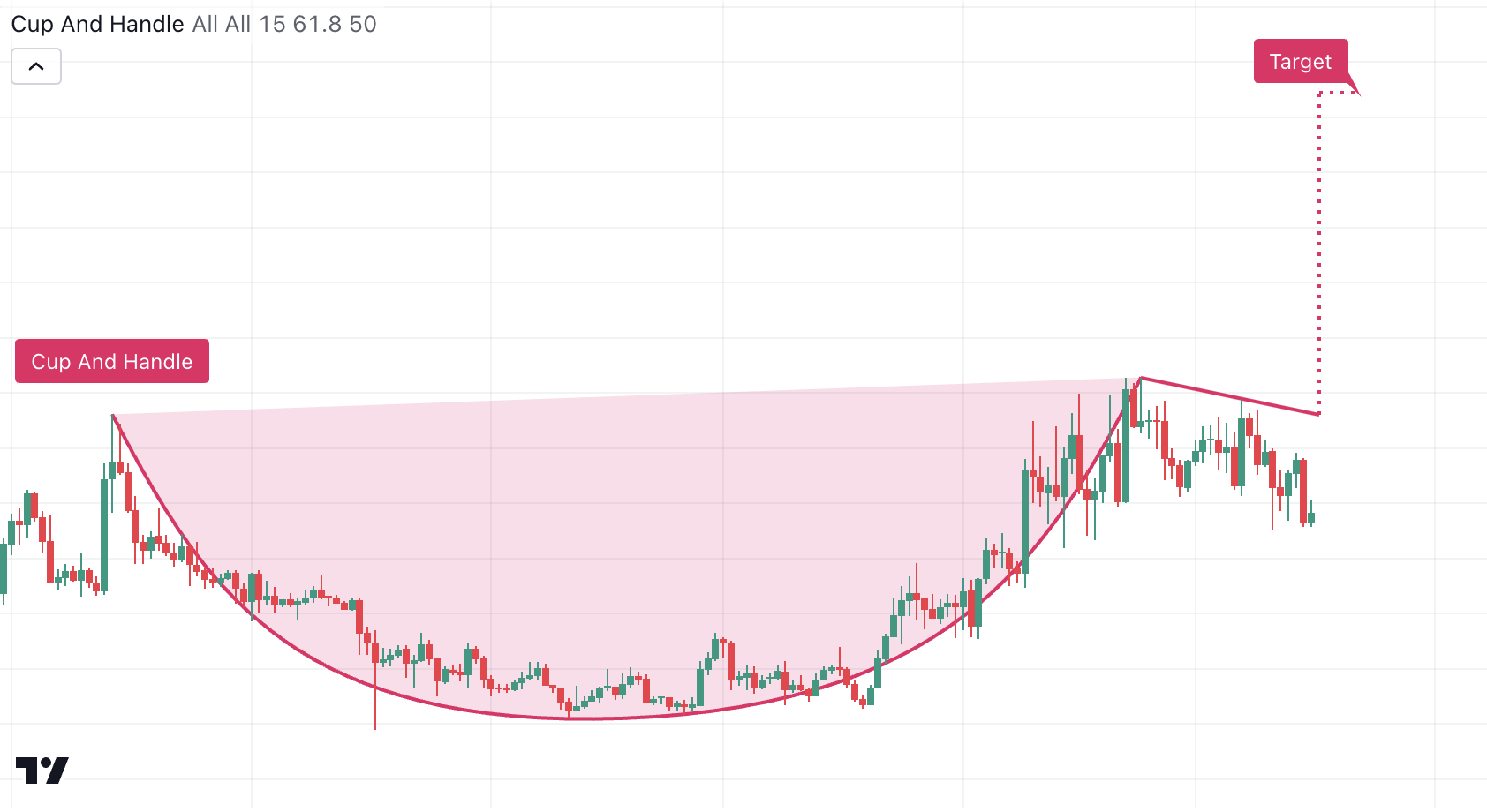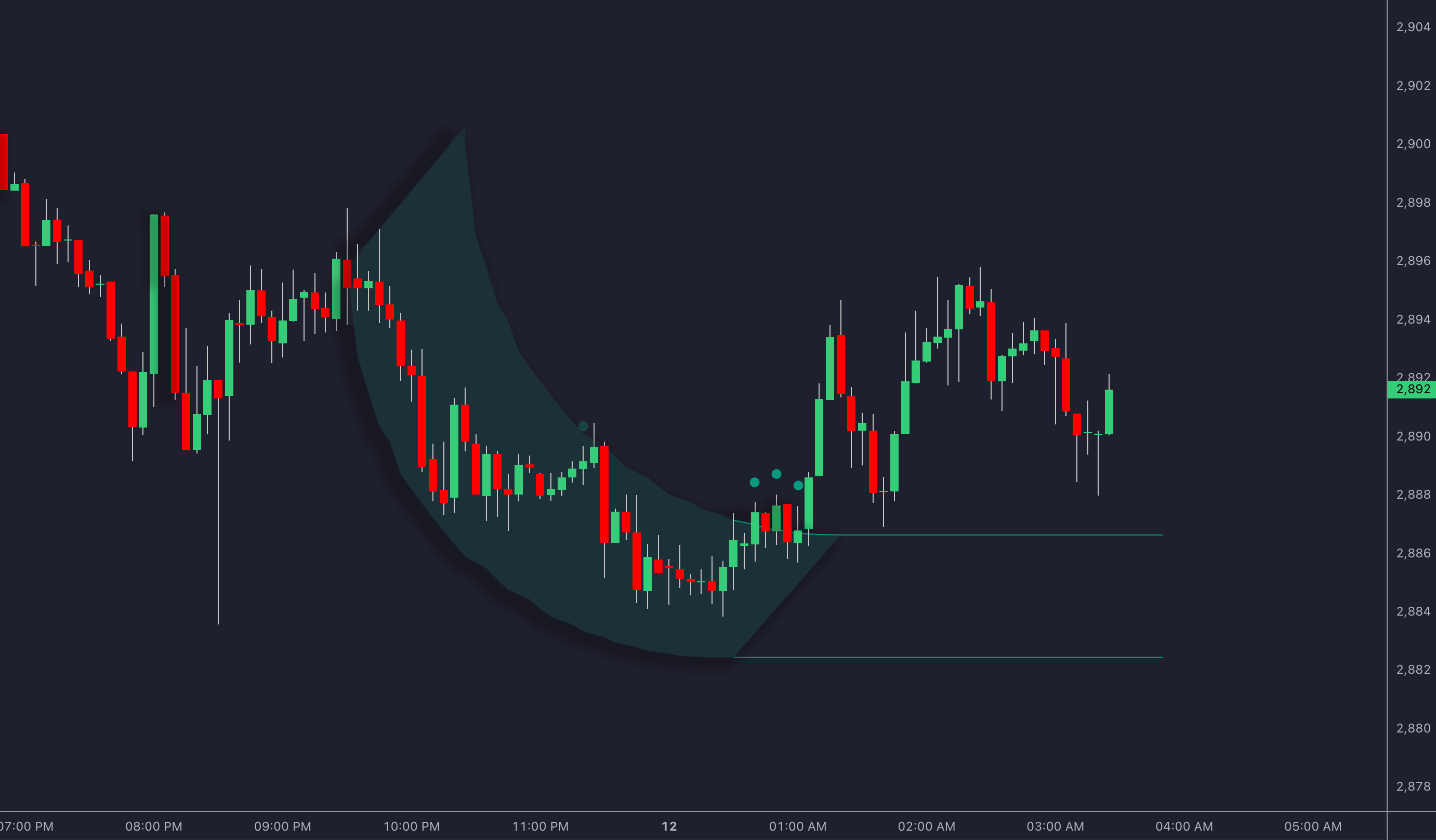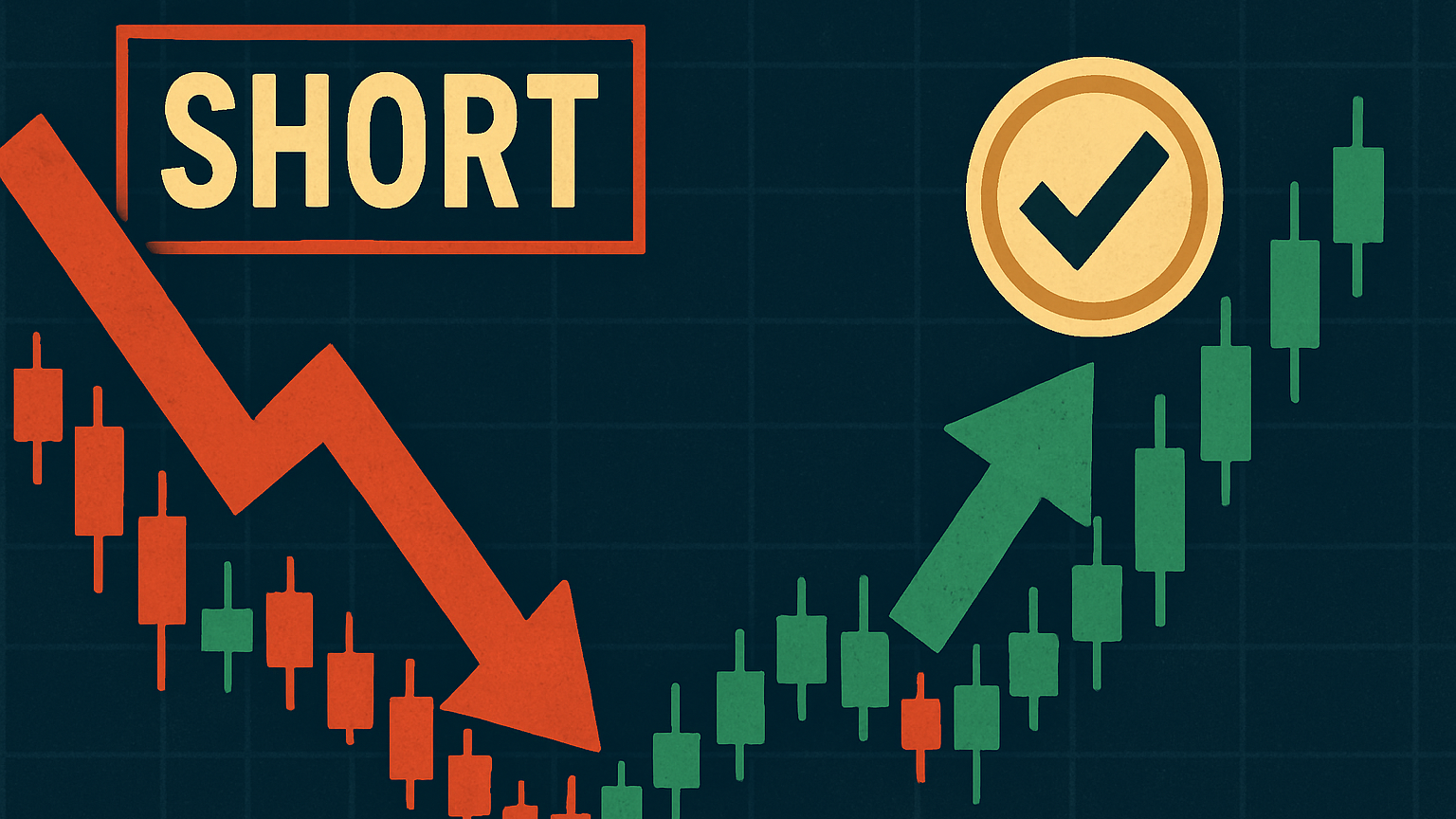Learn how to effectively utilize the cup and handle pattern for swing trading, including entry strategies and risk management techniques.
The cup and handle pattern is a powerful framework for swing traders, offering a historical success rate of 65% for upward price moves. It combines clear entry points, measurable profit targets, and built-in risk management. Here's what you need to know:

- What is it? A bullish continuation pattern forming during an uptrend. It consists of:
- A U-shaped cup lasting weeks to months.
- A handle with a slight downward drift over days to weeks.
- Why it works: Highlights market psychology – institutions accumulate during the cup while the handle phase helps shake out weaker positions.
- Key features to look for:
- Cup depth: 12-33% retracement of the prior uptrend.
- Handle retracement: No more than 8-12% from the cup's high.
- Volume patterns: Decreasing volume during the cup and handle, with a spike during breakout.
Entry and Risk Management
- Breakout Entry: Enter when price closes 2-3% above handle resistance with a 50% volume spike.
- Retest Entry: Enter after a pullback to the breakout level with declining volume and a bullish reversal.
- Stop-loss placement: Below the handle's low or 2-3× ATR.
- Profit targets: 62%, 100%, and 161.8% of the cup depth.
This pattern works best in established uptrends and requires confirmation through volume and technical indicators like RSI, MACD, and moving averages. Use multiple timeframes to validate setups and improve accuracy.
Identifying the Cup and Handle Pattern
Recognizing a cup and handle pattern involves understanding its key characteristics and using specific validation methods to separate genuine setups from false signals.
Features of the Pattern
To spot a proper cup and handle pattern, look for these elements:
- Cup Shape: A U-shaped base that develops over 1 to 6 months, with a depth of 12-33% from the previous high.
- Handle Formation: A consolidation phase lasting 1 to 4 weeks, positioned in the upper half of the cup.
- Handle Retracement: A pullback of no more than 8-12% from the cup's high.
- Smoothness: A rounded, gradual bottom rather than a sharp V-shape.
| Component | Ideal Criteria | Red Flags |
|---|---|---|
| Cup Depth | 12-33% of prior uptrend | Too shallow (<10%) or too deep (>50%) |
| Cup Duration | 1-6 months | Less than 1 month or over 1 year |
| Handle Duration | 1-4 weeks | Exceeds 1 month |
| Handle Depth | Maximum 8-12% decline | Retracement beyond 50% of cup depth |
Variations and Common Pitfalls
Although the classic cup and handle is well-defined, variations can still offer trading potential:
- Deep Cup: If the cup retraces more than 62% of the prior uptrend, it could still work but requires wider stop-losses and additional confirmation signals for safety.
- Shallow Cup: Cups with less than 33% retracement often indicate strong momentum. However, these setups need clear volume spikes during the breakout for validation.
Mistakes to avoid:
- Misinterpreting V-shaped bottoms as cups.
- Spotting patterns in downtrends instead of uptrends.
- Allowing handles to retrace too deeply into the cup.
- Overlooking volume trends that should confirm the setup.
Timeframes and Volume for Confirmation
Confirming a cup and handle pattern involves checking both volume and timeframe alignment.
Volume Trends:
- Volume should decrease during the cup's formation, with the lowest point at the bottom.
- Handle formation should see lower-than-average volume.
- Breakouts need a sharp volume increase, typically 40-50% above the average.
Timeframe Analysis: 1. Daily Charts: The most reliable patterns form on daily charts, offering a clear view of price action over weeks or months. 2. Weekly Charts: Use weekly charts to ensure the pattern aligns with broader trends and key support or resistance areas. 3. 4-Hour Charts: Shorter timeframes help fine-tune entry points and set precise stop-loss levels within the handle.
Entry Strategies for Cup and Handle Swing Trading
Once you've spotted a proper cup and handle pattern, the next step is nailing the entry. Your success hinges on timing and confirming the setup. Here’s a breakdown of the best entry methods and how to validate them.
Breakout Entry Method
A breakout entry focuses on price breaking above the handle's resistance. Here’s what you’ll need to confirm it:
- A 2-3% price close above the handle resistance
- A volume spike of at least 50% compared to the 20-day average
- The breakout should occur within 1-4 weeks after the handle forms
These criteria align with the volume validation principles we've discussed earlier.
| Breakout Criteria | Target Measurement |
|---|---|
| 2-3% price move above resistance | Cup depth added to breakout point |
| Volume 50% above 20-day average | Initial stop below handle low |
| Clean break of resistance line | Risk-reward minimum 2:1 |
Retest Entry Method
If you prefer a more conservative approach with a better risk-to-reward ratio, the retest entry is worth considering. This involves entering after the breakout has already been confirmed and the price pulls back to test the breakout level.
Key requirements for a retest entry:
- A pullback within 1-2% of the breakout level
- Volume declining during the pullback
- A bullish reversal candle appearing at the support level
- A stop-loss set 0.5-1% below the retest low
Confirming Entries with Indicators
Technical indicators can add another layer of confidence to your entry decisions. When paired with price action, they help validate the setup.
Here are some reliable tools for confirmation:
- RSI above 50
- MACD bullish crossover
- Rising 20- and 50-day moving averages
- Volume expansion during the breakout
These indicators, combined with the volume and timeframe validation framework, can sharpen your entry strategy and reduce risk.
LuxAlgo Library Resources
The LuxAlgo Library offers a comprehensive collection of free indicators designed to support your trading strategies. Among these are several cup and handle indicators, including the innovative half cup indicator that can help refine your analysis.

This resource is particularly useful for traders looking for a variety of technical analysis tools without a heavy reliance on platform-specific features. Whether you’re a beginner or an experienced trader, exploring the indicators available in the library can offer fresh insights into market trends.
For example, one notable indicator available is the half cup indicator. It provides a simplified approach to identifying potential breakout patterns.

Conclusion: Mastering Cup and Handle Trading
Trading the cup and handle pattern effectively means combining sharp pattern recognition with disciplined execution. Success hinges on three main elements: spotting valid patterns, adhering to strict risk controls, and reviewing performance regularly. When applied correctly, this strategy has shown historical success rates of 65-68%, with average post-breakout gains of 35% [1].
Here are some key factors for success:
- Confirming the pattern across different timeframes
- Analyzing volume for added confirmation
- Tracking performance through detailed trading journals
- Adjusting strategies based on past results
Sticking to the identification and risk management principles discussed earlier is essential for long-term success. Regularly analyzing performance with clear metrics allows for continuous improvement in execution.
"The cup and handle is a bullish continuation pattern that marks a consolidation period followed by a breakout." - Thomas Bulkowski, Technical Analysis Expert, ThePatternSite.com
FAQs
How to trade cup and handle formation?
The cup and handle pattern provides a clear framework for swing trading when done correctly. Here's how you can approach trading this setup:
- Entry Point: Look to enter a trade just above the handle's resistance level, but only after confirming a volume increase.
- Stop Placement: Set your stop-loss slightly below the handle's low, typically 2-3%.
- Profit Target: Use the depth of the cup (from its lowest point to the breakout level) to calculate your target.
For better outcomes, keep these tips in mind:
- Ensure the handle forms in the upper half of the cup.
- Look for a volume surge of at least 50% compared to the 20-day average to confirm the breakout.
- Combine this entry method with trailing stop strategies to maximize your results.







